Solar eclipse of September 2, 2054
A partial solar eclipse will occur on Wednesday, September 2, 2054. A solar eclipse occurs when the Moon passes between Earth and the Sun, thereby totally or partly obscuring the image of the Sun for a viewer on Earth. A partial solar eclipse occurs in the polar regions of the Earth when the center of the Moon's shadow misses the Earth.
| Solar eclipse of September 2, 2054 | |
|---|---|
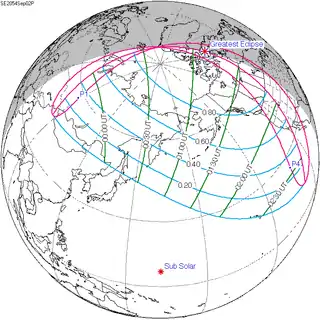 Map | |
| Type of eclipse | |
| Nature | Partial |
| Gamma | 1.0215 |
| Magnitude | 0.9793 |
| Maximum eclipse | |
| Coordinates | 71.7°N 82.3°W |
| Times (UTC) | |
| Greatest eclipse | 1:09:34 |
| References | |
| Saros | 155 (8 of 71) |
| Catalog # (SE5000) | 9628 |
This is the last of first set of partial eclipses of Solar Saros 155. The next event is the Total Solar Eclipse on September 12, 2072, which is the first of 56 umbral eclipses, starting in 2072 and ending in 3064. The total duration is almost one millennium, exactly 992 years.
Related eclipses
Solar eclipses 2051–2054
This eclipse is a member of a semester series. An eclipse in a semester series of solar eclipses repeats approximately every 177 days and 4 hours (a semester) at alternating nodes of the Moon's orbit.[1]
| Solar eclipse series sets from 2051–2054 | ||||
|---|---|---|---|---|
| Descending node | Ascending node | |||
| Saros | Map | Saros | Map | |
| 120 | April 11, 2051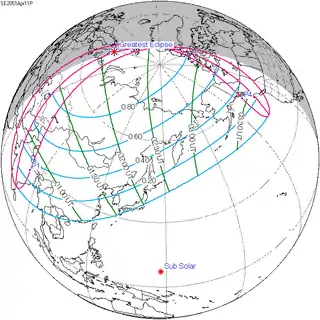 Partial |
125 | October 4, 2051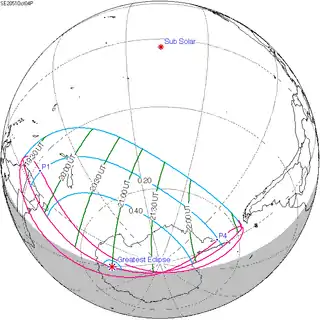 Partial | |
| 130 | March 30, 2052 Total |
135 | September 22, 2052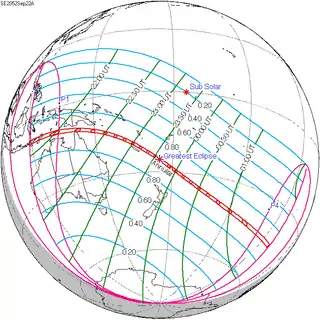 Annular | |
| 140 | March 20, 2053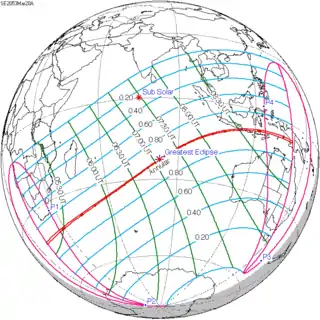 Annular |
145 | September 12, 2053 Total | |
| 150 | March 9, 2054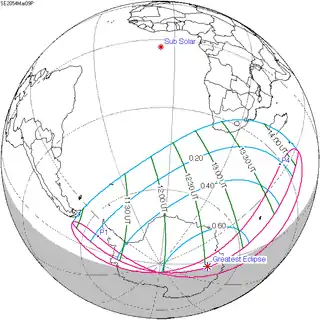 Partial |
155 | September 2, 2054 Partial | |
Saros 155 series
It is a part of Saros cycle 155, repeating every 18 years, 11 days (223 synodic months), contains 71 events. The series started with a partial solar eclipse on June 17, 1928. It has total eclipses from September 12, 2072 to August 30, 2649. The series also has 3 hybrid eclipses from September 10, 2667 to October 3, 2703 and 20 annular eclipses from October 13, 2721 to May 8, 3064.
The series ends at member 71 as a partial eclipse on July 24, 3190. The longest total eclipses will be on October 26, 2144 and on November 7, 2162, at 4 minutes and 5 seconds.[2]
| Series members 1–10 occur between 1901 and 2100: | ||
|---|---|---|
| 1 | 2 | 3 |
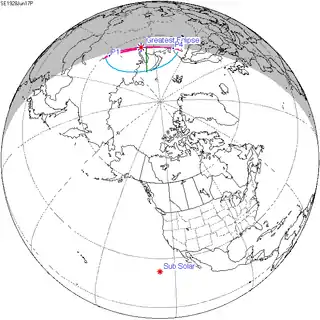 June 17, 1928 |
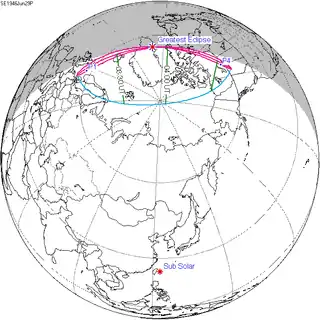 June 29, 1946 |
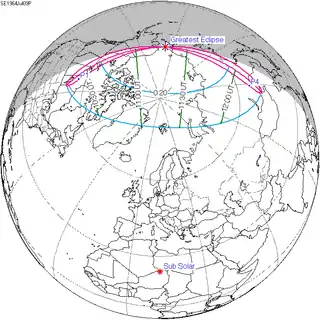 July 9, 1964 |
| 4 | 5 | 6 |
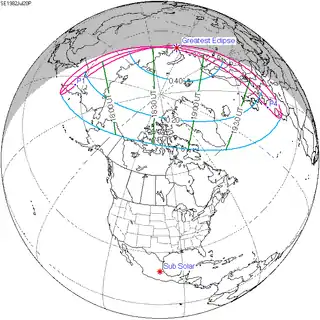 July 20, 1982 |
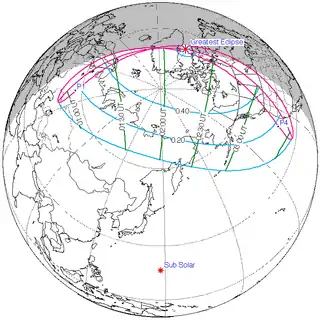 July 31, 2000 |
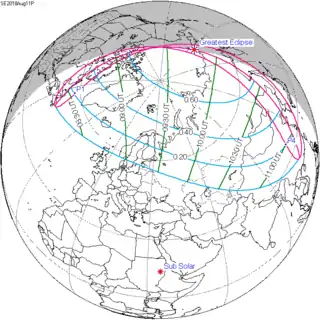 August 11, 2018 |
| 7 | 8 | 9 |
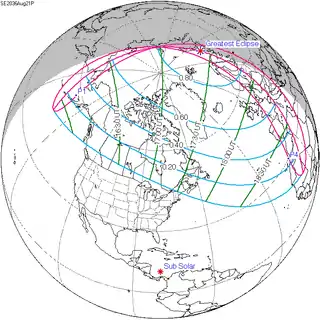 August 21, 2036 |
 September 2, 2054 |
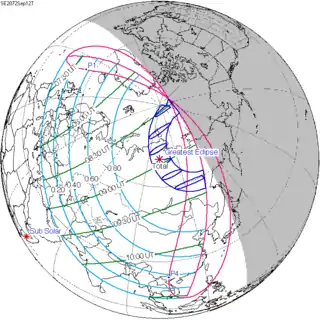 September 12, 2072 |
| 10 | ||
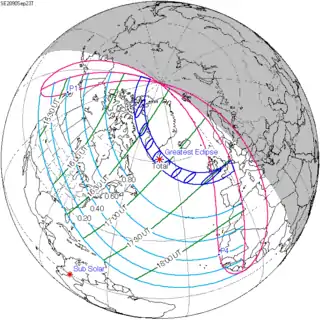 September 23, 2090 | ||
Metonic series
The metonic series repeats eclipses every 19 years (6939.69 days), lasting about 5 cycles. Eclipses occur in nearly the same calendar date. In addition, the octon subseries repeats 1/5 of that or every 3.8 years (1387.94 days). All eclipses in this table occur at the Moon's ascending node.
| 21 eclipse events between June 21, 1982, and June 21, 2058 | ||||
|---|---|---|---|---|
| June 21 | April 8–9 | January 26 | November 13–14 | September 1–2 |
| 107 | 109 | 111 | 113 | 115 |
| June 21, 1963 | April 9, 1967 | January 26, 1971 | November 14, 1974 | September 2, 1978 |
| 117 | 119 | 121 | 123 | 125 |
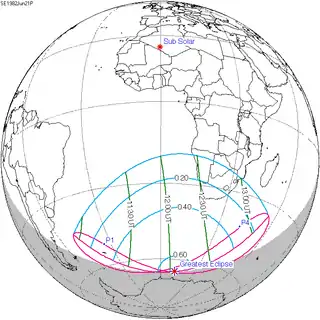 June 21, 1982 |
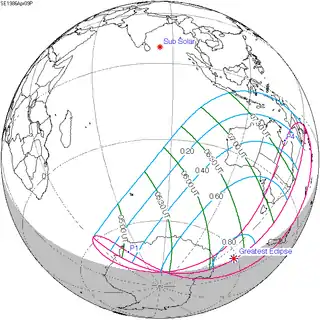 April 9, 1986 |
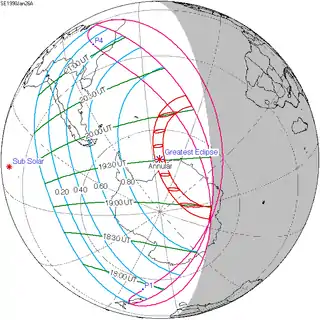 January 26, 1990 |
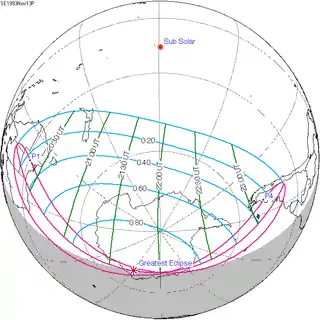 November 13, 1993 |
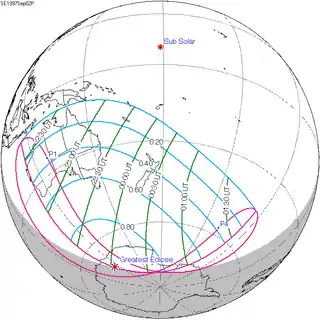 September 2, 1997 |
| 127 | 129 | 131 | 133 | 135 |
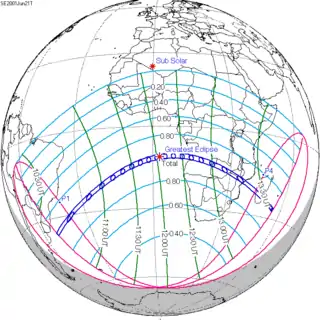 June 21, 2001 |
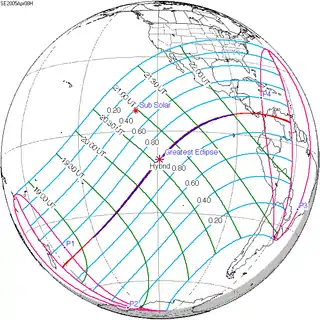 April 8, 2005 |
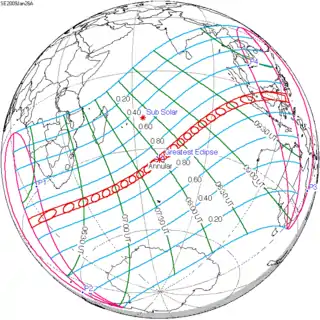 January 26, 2009 |
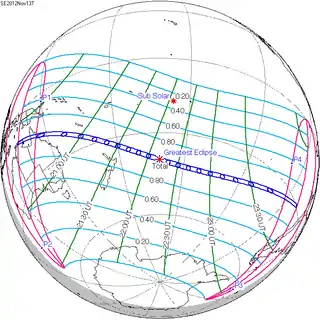 November 13, 2012 |
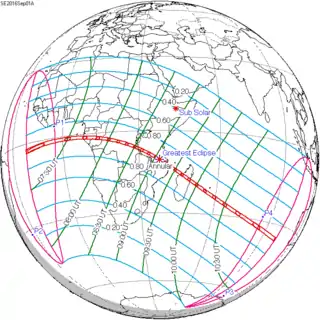 September 1, 2016 |
| 137 | 139 | 141 | 143 | 145 |
 June 21, 2020 |
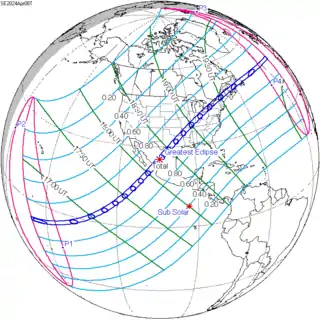 April 8, 2024 |
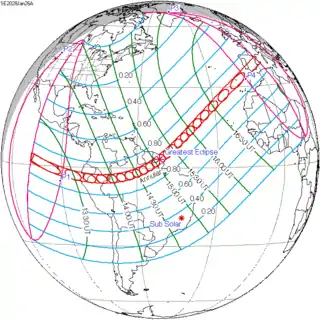 January 26, 2028 |
 November 14, 2031 |
 September 2, 2035 |
| 147 | 149 | 151 | 153 | 155 |
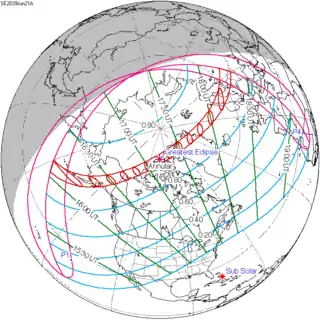 June 21, 2039 |
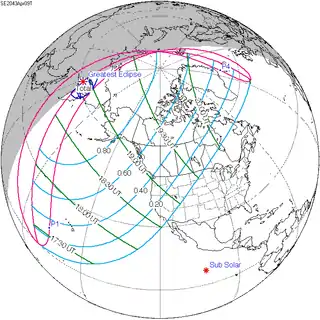 April 9, 2043 |
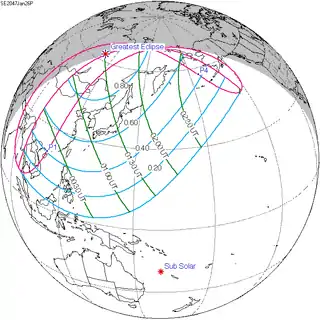 January 26, 2047 |
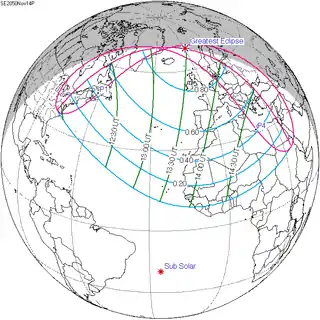 November 14, 2050 |
 September 2, 2054 |
| 157 | ||||
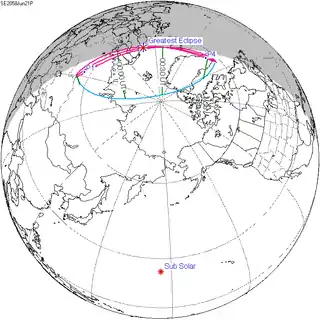 June 21, 2058 | ||||
References
- van Gent, R.H. "Solar- and Lunar-Eclipse Predictions from Antiquity to the Present". A Catalogue of Eclipse Cycles. Utrecht University. Retrieved 6 October 2018.
- Saros Series Catalog of Solar Eclipses NASA Eclipse Web Site.
.jpg.webp)

